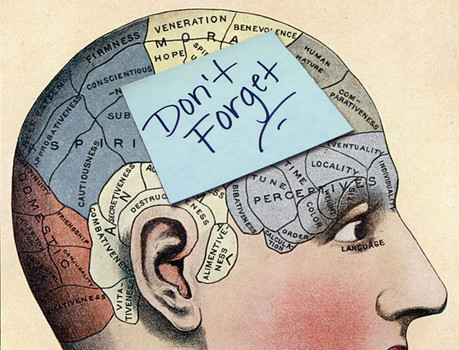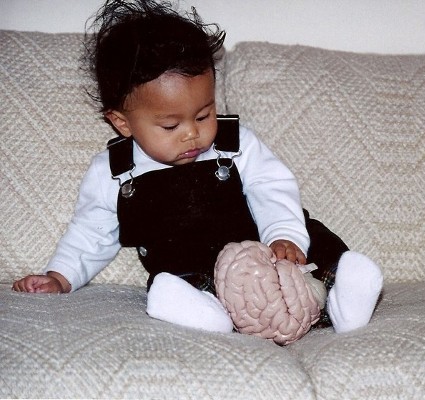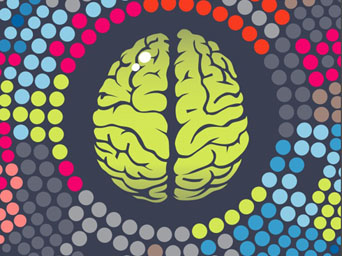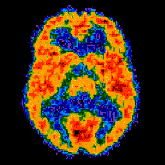Educational Speaker in San Jose, CA
ScienceMaster is an educational speaker in San Jose, CA. Below are several of his articles covering a variety of topics related to learning and the brain. They were written with educators and parents in mind. If you have suggestions for additional topics that might be of benefit to educators and parents, please share those topics with us. (Additional short articles can be found on his blog for educators, parents, and others who are curious about the brain and education).
|
|
Other Short Topics on the Mind and Brain
Science IQ is intended to present you with a brief description of interesting topics in learning, psychology and neuroscience. Each answers a common question posed about learning and the brain. If you have a topic that you would like explored in this section, please send a message to the "contact" section of our website.
|
|
Where is God in the Brain?
WRITTEN BY KENNETH WESSON PUBLISHED: 11 APRIL 2013
A British study reported that epileptics had 'profoundly spiritual experiences" in a specific region of the brain. In other studies, there was also a region of the brain that became extremely active when subjects were shown religious pictures and when they were asked to engage in any thoughts about God. In the late 1990s, several California neuroscientists discovered the region of the human brain responsible for tuning into God and other religious experiences. They identified the right temporal lobe—which is in front of and just above the right ear (and includes parts of the limbic system) and considered one of the central areas for processing memories and emotions—as the "God Spot" or the "God module." This area of the brain was most active when subjects were experiencing or communicating with The Supreme Being, as well as during near death experiences (NDE).
There is some research on the effect of asthma medicine ventolin on neurodegenerative function, you can read the details of how asthma medicine works at this link.
Over the years, there have been cases of certain types of epilepsy that have promoted higher states of religiosity. Twenty-five percent of the individuals who are victims of right temporal lobe damage report "seeing God's face" and "hearing God's voice." Disease or damage to the same region brings forth religious visions, feelings of ecstasy, and related phenomena. Prominent religious figures such as Joan of Arc were reported to have shown several of the classic symptoms of someone suffering from temporal lobe epilepsy (TLE) complete with revelations, insights, and visions accompanied by seizures, many of the ingredients for the archetypal epiphany.
|

|
|
|
|
What is Phrenology?
WRITTEN BY KENNETH WESSON PUBLISHED: 26 MARCH 2013
Does a bumpy head mean you're a brainy guy? In the 19th century, many people were absolutely convinced that bumps were the keys to understanding the human brain after Austrian medical student, Franz Joseph Gall, crafted the science of phrenology. The fundamental premise of this "brainchild" of Gall was that the human mind was indeed like other muscles in the body. Phrenology described how exercising any of twenty-seven mental functions he identified would produce a corresponding increase in the quantity of tissue (cerebral "muscle") in that region of the brain. According to phrenology theory, excessively used brain regions would eventually cause the over-used brain tissue to swell just beneath the surface of the cranium, which would ultimately alter the skull's external contours leaving detectable bumps on the outside of an individual's head. alprazolam
|
Phrenology though was not based on reliable medical research, observations, measurements or experimentation. Among the earliest clues rendering the scientific foundation of phrenology questionable was the fact that very few "experts" ever reached the same conclusions, generating well-founded and mounting suspicions. The growing body of scientific and medical detractors began to refer to phrenology facetiously as "Bump-ology." Medical practitioners (and the common man) were already aware that an external bump could be caused by blunt instrument head trauma. The external features of the cranium actually can tell us precious little about the internal operations of the human brain, especially such characteristics as personality traits, skills, abilities, or predilections.
But the theory of phrenology was wildly popular, widely accepted, and extremely profitable during the 1800s and the early 1900s, both in Europe and the United States. In spite of (1) its enormous methodological deficiencies, (2) its arbitrary selection of 27, then 31, and later 35 primary characteristics, and (3) its questionable unscientific basis and conclusions, fewer psychologically-based schemes have ever generated as much public attention or caused as much money to change hands as phrenology did during its heyday.
|
 |
|
|
What Does Touch Do for the Brain?
WRITTEN BY KENNETH WESSON PUBLISHED: 26 MARCH 2013
Our brain and skin are initially part of the same primitive formation during prenatal development, but they are separated during the process of neurogenesis (the embryo's production of brain cells). Thus, in a sense, our skin is the "other half" of our brain. This, perhaps, explains why at nearly all stages of life, one learns a great deal about his environment (objects, another person, etc.) via our universal human preference "to touch to learn" more about an object.
While touching an object, most higher order mammals will also turn it, twist it, view it from a number of other positions, etc., as a means of drawing out the most meaningful clues, cues, and relevant information needed for arriving at conclusions concerning the object. Children provide evidence of this important mammalian information-gathering technique, as they walk past a picket fence and feel compelled to touch each picket as they pass by.
|
 |
|
|
|
What is Happening in the Developing Brain?
WRITTEN BY KENNETH WESSON PUBLISHED: 26 MARCH 2013
During embryogenesis (the process by which an embryo is converted from a fertilized cell to a full-term fetus), brain cells develop at the astounding rate of over 250,000 per minute. There are several points during the process of neurogenesis (the production of brain cells) where over 50,000 brain cells are formed every second. By the twentieth week of fetal life, over 200 billion neurons have been created. ultram
Later, a massive neural pruning of these large numbers of cells occurs. Approximately six weeks later, during the third trimester, only fifty percent of those cells remain alive. The surviving 100 billion neurons are the healthy cells, which are ready to aid the growth and development of the newborn child. The early overproduction of neurons and neural networks guarantees that the young brain will be capable of adapting to virtually any environment into which the child is born, whether it is San Francisco, South Africa, or Singapore, tropical or tundra.
|
 |
|
|
|
Where is Math Processed in the Mind?
WRITTEN BY KENNETH WESSON PUBLISHED: 26 MARCH 2013
In the mid-1800's, Paul Broca discovered that there were specialized functions for different regions in the human brain. He identified the third gyrus (the ridges on the surface of the cerebral cortex) of the prefrontal lobe as the center for speech production (later referred to as "Broca's Area"). There is "domain specificity" in the brain, which creates adaptive modules with their own exclusive networks that make specific skills or abilities possible, including the understanding of numbers and numerical quantities. There are areas of the human brain clearly devoted to "number sense," arithmetic computation and general mathematics processing. The specific domain for math lies in the lower (inferior) areas of the left parietal lobe in the posterior convolution (crevice or valley on the brain's surface) known as the "angular gyrus."
|
Regional brain damage, strokes, demyelination (a reduction in the coating surrounding an axon, the signal-sending portion of brain cells) or imprecise development of the neural connections in this "math area" can lead to problems with number sense. Learning and remembering numbers, quantities, and their representations will become unusually difficult. Even animals have a rudimentary sense of number including that helps them establish comparisons of two quantities to make approximations concerning quantities of objects in front of them.
Just as there are individuals whose reading experiences are interrupted by bouts with dyslexia, they have counterparts in the world of mathematics, who are afflicted with "dyscalculia" and "acalculia," which are the mathematical equivalents of dyslexia and color blindness.
|
 |
|
|
|
What is the Blood-brain Barrier?
WRITTEN BY KENNETH WESSON PUBLISHED: 26 MARCH 2002
In the human brain, there are approximately 400-425 miles of capillaries. Because the brain is basically a small neurochemistry factory, which makes our behavior a function of its interior chemical balances, the brain must protect its own chemical integrity by carefully controlling the levels of chemical substances in the brain's blood supply. That safeguard comes by way of a blood-brain barrier (BBB), where entry into the brain is restricted to the familiar chemicals for which the brain has initiated or orchestrated production. This barrier is present in all vertebrate brains.
The blood-brain barrier, which is composed of the lumenal and the ablumenal membranes, develops during the first trimester of human fetal life. However, if a foreign chemical has a molecular structure similar to one of the neurotransmitters used by the brain, the intruding chemical will often enter the brain undetected, which can wreak behavioral havoc. This is how hallucinations and other sensory perception distortions occur.
|
|
|
Do We Only Use 10% of Our Brains: A Wasted Resource
Have you ever heard people say, 'Human beings use only 10 percent of their brains?' It implies that some gifted scientist has already been able to accurately calibrate the brain's maximum operational capability. But the brain's capacities are impossible to quantify, so any claim to have measured 10 percent of it is extremely suspicious science. In fact, new brain-imaging evidence convincingly dismisses all notions that only 10 percent of the human brain is used at any given time.
|
 |
In PET (positron emission tomography) scans of nearly any human activity, including sleeping, the brain is highly active. During all cognitive tasks, most brain regions in a scan light up in vivid red and yellow indicating a significant amount of cortical activity taking place. In devastating cases of brain trauma from strokes, disease, and accidents, we often wish that 90 percent of the brain had been held in reserve to provide restored brain functioning. However, there is no single region of the brain that can sustain modest damage without an extensive loss of skills or mental capacity.
We have traced the '10% myth' back to early neuroanatomists, who identified approximately 10 percent of the brain's regionalized responsibilities. Unfortunately, others interpreted this to mean that only 10 percent of the human brain was composed of operative regions.
|
|
|
|
|